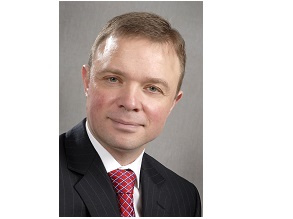ABHI Cardiovascular Health Check Report: Spotlight on Workforce
That cardiovascular disease (CVD) is second only to cancer as the UK’s biggest killer will come as no surprise to most of us. That it takes 160,000 UK lives per year is shocking, but sadly also not surprising. A disease which is responsible for one in four premature deaths in the UK, and costs an estimated £7.4bn each year in healthcare costs, simply must have a national strategy. This is why the RCR was so pleased to be able to contribute to the ABHI Cardiovascular Health Check Report, a state of the nation document that sets out a way forward to tackle this pernicious disease with a joined up, strategic approach, aimed squarely at improving patient outcomes.
As with any strategy, the destination is straightforward but the journey towards it is complex, comprising issues including workforce, technology, awareness building, consistency and sharing best practice.
It will come as no surprise to anyone that workforce is the key issue in tackling CVD. Whether we focus on GPs, consultant radiologists, interventional radiologists, physicians, surgeons, anaesthetists and other hospital specialty groups, nurses, allied health professionals or support staff, workforce issues continue to impact the service offered to patients in terms of diagnosing and treating CVD. We at the RCR know too well the workforce pressures on consultant radiologists who are expert in a range of diagnostic imaging tests including cardiac and vascular imaging. Our data tells us that there is a shortage of 1,989 whole-time equivalent clinical radiologists for the UK just to reach the European average – this equates to a 33% shortfall. If current trends in demand and workforce entries and exits continued to 2030, there would be shortages of close to 6,000 consultant clinical radiologists which is simply untenable. The situation is no better for interventional radiologists, who are skilled at performing a range of minimally invasive life-saving treatments through a pinhole, including treating aneurysms, stopping life-threatening haemorrhage, and stroke thrombectomy (clot retrieval in the commonest form of stroke); there is a shortage of 364 interventional radiologists across the UK to provide a safe system of care according to current guidelines and this represents a shortfall of 35%. There is no one simple answer to the workforce crisis. More trainee numbers is critical and this must include a long-term commitment to build training places and training capacity. We also need easier appropriate international recruitment and a focus on staff retention, particularly of doctors approaching retirement, along with skills mix and specific training. It will take time and effort but addressing workforce issues now has to be the number one priority for the government and the NHS. We need to train today to have service delivered in future.
Of course, workforce is not the only barrier to better outcomes. The best workforce will not be able to improve patient outcomes if patients are not referred for the right treatment. The report details that whilst recommended CVD pathways exist, there are too many instances where these pathways are not properly adhered to. New pathways have been developed but best practice has not always been systematically recorded or shared. We need a joined-up approach that ensures innovation is to the benefit of all patients from a consistent approach, with more accountability and awareness. We know that well designed pathways, widely followed, improve outcomes.
Equally important is awareness building and information sharing. Too many patients struggle to obtain the information they need, once diagnosed, and find it far too challenging to navigate the system. We need straightforward information, so that patients have a clear understanding of their diagnosis and their pathway.
These important steps will make a real difference to CVD outcomes, but in order to achieve success, we also need to address the issues around diagnosis. Ensuring widespread awareness of the early signs of CVD is important, so that early and further diagnostics can be commissioned, but even early referral for diagnostics will not solve the problem unless we tackle the thorny issue of technology and equipment. Once the early signs are identified, CVD usually requires confirmation and severity assessment with diagnostic equipment. However, investment in this equipment is inadequate across the NHS, meaning early detection is often not possible, so there simply must be greater and sustained investment in diagnostic equipment. The development of community diagnostic centres is welcomed, providing an increase in equipment and imaging capacity, and these will generally be located closer to the patient’s home. These may allow greater efficiency, but these still require an increase in the workforce which is already working at and beyond its full capacity. Data sharing through digital connectivity is required to ensure rapid transmission of data for diagnosis and this should also reduce the need for patients to undergo repeat tests because these will be more widely available, such as within a regional imaging network.
Technology assessment arrangements can be complex and difficult to navigate, and adoption of new technologies is far too slow. This is where partnerships with industry can help; the report recommends secondments and training so that the NHS can make the most of technological advances and make a real difference to patient outcomes.
None of this ignores the fact that all of these recommendations come when the NHS is under real pressure post-Covid. The current NHS context of record waiting times, and hospitals struggling to clear the backlog of cases caused by the pandemic means that it will be particularly challenging to implement all these recommendations. However, this is why the call for CVD to be a high priority with dedicated resources is important.
CVD is not going away; if anything, it is set to claim increasing numbers of lives over the next decade, but we can make a real difference to patient outcomes through the recommendations in this report. None of it is particularly new – we know workforce is an issue, we know that education and sharing best practise saves lives, and we know that technology, adopted well, can transform diagnostics and healthcare. However, recommendations are of limited use unless they are implemented. I hope very much that you will read the report, digest it and discuss/promote it at every opportunity to ensure that the right decisions are made at the highest level. We are at a junction, and we need to make sure we make the right turn.


Dr Stephen Harden, Consultant Cardiothoracic Radiologist & Clinical Radiology Medical Director, Education and Training, Royal College of Radiologists



